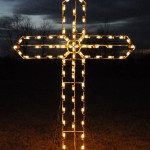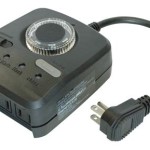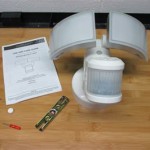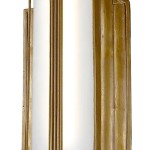What Is a Good Outdoor TV Antenna?
Cutting the cord and ditching expensive cable subscriptions has become increasingly popular. A key component of this transition is a reliable TV antenna, and for many, an outdoor antenna offers the best performance. Choosing a good outdoor TV antenna involves understanding several factors, from signal range and frequency support to antenna type and installation considerations.
Understanding Antenna Range
Antenna range is a crucial specification indicating how far the antenna can effectively receive broadcast signals. Manufacturers typically provide an estimated range, often expressed in miles. However, the actual range can vary depending on several environmental factors. Obstacles like buildings, trees, and hills can significantly impede signal reception. The higher the antenna is mounted, the better the chance of bypassing these obstructions and receiving a clearer signal. Therefore, realistically assessing the distance from local broadcast towers and considering the surrounding terrain are crucial steps in selecting the appropriate antenna range.
Frequency Support: VHF and UHF
Over-the-air broadcasts utilize two frequency bands: VHF (Very High Frequency) and UHF (Ultra High Frequency). Different channels broadcast on different frequencies within these bands. A good outdoor antenna should support both VHF and UHF frequencies to ensure access to the widest range of available channels. Some antennas specialize in one frequency band over the other, so check the antenna specifications to ensure it aligns with the frequencies used by local broadcasters. This information can usually be found through online resources or by contacting local TV stations.
Antenna Types: Directional and Multi-directional
Outdoor TV antennas are broadly categorized into directional and multi-directional types. Directional antennas are designed to receive signals from a specific direction. They offer superior performance for users located further away from broadcast towers, as they can be precisely aimed to maximize signal reception. Multi-directional antennas, on the other hand, receive signals from all directions. While generally suitable for users closer to broadcast towers, multi-directional antennas may be less effective in areas with significant signal interference or obstructions.
Antenna Gain
Antenna gain is a measure of an antenna's ability to amplify signals. It is expressed in decibels isotropic (dBi). A higher dBi value indicates greater signal amplification. While higher gain can be beneficial, particularly in fringe reception areas, it's essential to choose an antenna with an appropriate gain for the specific situation. Excessively high gain can sometimes amplify noise alongside the desired signal, leading to a degraded picture quality.
Considering the Environment
The environment plays a significant role in antenna selection. Outdoor antennas are exposed to the elements, so durability is paramount. Look for antennas constructed from weather-resistant materials designed to withstand rain, snow, wind, and extreme temperatures. The antenna's mounting location should also be considered. Roof-mounted antennas typically offer the best performance, but attic or wall-mounted options may be suitable in certain situations. Ensuring secure and stable mounting is crucial for long-term performance and safety.
Installation and Grounding
Proper installation is vital for optimal antenna performance. Clear instructions should be provided with the antenna, and if necessary, professional installation should be considered. Grounding the antenna is crucial for safety, protecting against lightning strikes and electrical surges. Local building codes may dictate specific grounding requirements, so it's important to be aware of and comply with these regulations.
Signal Amplifiers (Boosters)
In areas with weak signals, a signal amplifier, also known as a booster, can improve reception. Amplifiers boost the signal strength before it reaches the television. However, amplifiers can also amplify noise, so it's essential to select an amplifier appropriate for the situation and avoid over-amplification. Understanding the existing signal strength and identifying potential sources of interference are crucial steps before incorporating an amplifier into the antenna setup.

5 Best Outdoor Tv Antennas And Attic The Strategist

Top 10 Best Antenna For Rural Areas In 2024 Expert Reviews Our Choices

Which Is The Best Tv Antenna For Rural Areas

5 Best Outdoor Tv Antennas And Attic The Strategist

The Best Tv Antennas For Rural Areas To Get Live Television Popular Science

Top 5 Best Outdoor Tv Antenna 2024

What Is The Best Tv Antenna For Rural Areas Wireless

Master The Art Of Outdoor Tv Antenna Installation Tips Tricks And Expert Advice Estar Mobile Center

Whole Outdoor Tv Antenna Good 470 862mhz Log Periodic Yagi 20e Made In China Com

What Is The Best Place To Put Tv Antenna Digital Outdoor







